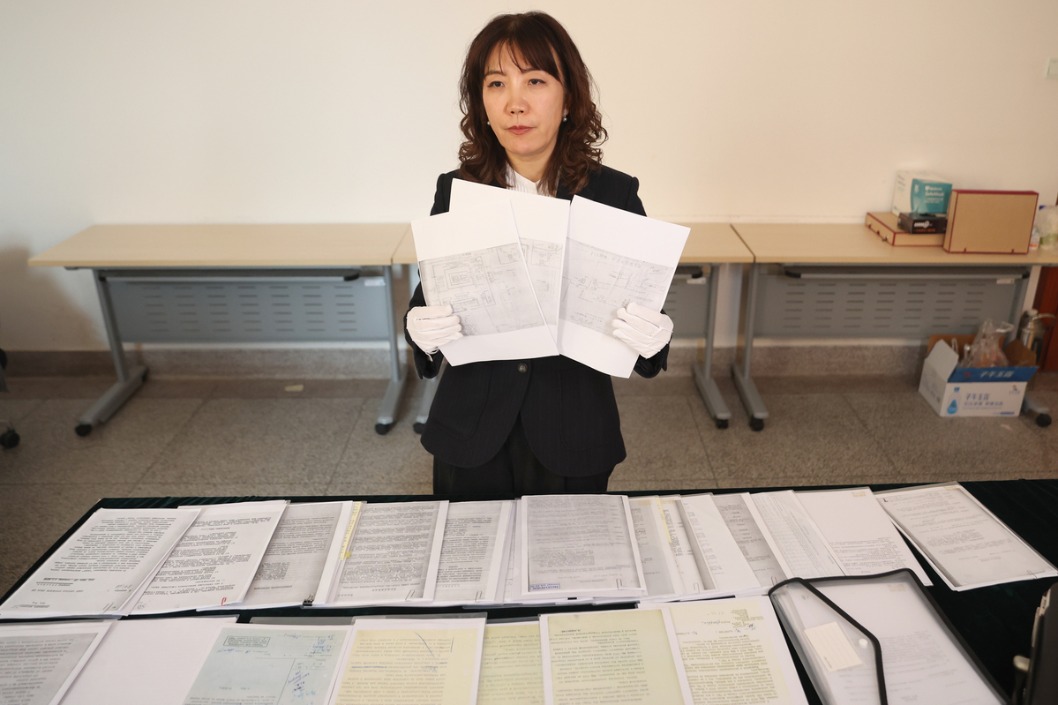Gas cuts


Certification of offset tree planting is a pragmatic market-based approach Brazil and China are cooperating on to reduce methane emissions by cows
It was exciting to hear Brazil's Environment Minister Joaquim Alvaro Pereira Leite announce freshly formalized national commitments for tackling greenhouse gas emissions and deforestation at the 26th United Nations Climate Change Conference of the Parties, or COP 26, in Glasgow on Nov 13, 2021.
These commitments, including halving greenhouse gas emissions by 2030, realizing carbon neutrality by 2050, and ending illegal deforestation by 2080, can help save the seven biomes in the world and control the global rise in temperature.
China and Brazil have developed a comprehensive partnership at many different levels. Both public and private stakeholders from China have invested in Brazil's agribusiness and agriculture-linked infrastructure building since 2014.Maintaining economic growth while promoting food security plays an increasingly important role in this bilateral relationship. Brazil has established instruments, mechanisms and programs to meet its targets. These experiences are referential to sustaining China's imports, the sectoral development in China and of value for China to achieve its carbon emissions reduction goals.
One of the most eye-catching public-private initiatives is the production of the first carbon-neutral beef product in the world-Viva-by Brazilian agricultural research company Embrapa, and a leading beef company, Marfrig. After spending five years and 10 million reals ($1.8 million) on investigating the concept, protocol, techniques and the certification mechanism, Viva-certified meat has been available in over 10 supermarkets in the state of Sao Paulo since 2020.
There is little doubt that addressing greenhouse gas emissions from the livestock sector, which accounts for 14.5 percent of man-made emissions according to the Intergovernmental Panel on Climate Change's calculation, is a significant challenge. This number is larger for leading agricultural production countries such as the United States, New Zealand and Brazil.
In the livestock sector, cattle ranching is responsible for methane emissions, which is directly responsible for habitat conversion. The whole life of beef production, from the beginning of ranching-induced land-use change to food wastes, emits the highest amount of greenhouse gas compared to other ruminants, according to statistics from Our World in Data. Decarbonizing the farming stage, especially cattle's enteric methane emissions, is an essential step for combating climate change.
Brazil took the first-mover position in addressing beef-pertinent greenhouse gas emissions.
Its designed methodology is to neutralize the enteric methane of cows by planting trees in pastures, called Livestock-Forestry or Crop-Livestock-Forestry system. Embrapa found that methane emitted by 11 adult cattle per hectare per year could be offset by 200 fast-growing trees such as eucalyptus per hectare, bearing in mind Brazil's average stocking rate of 1.2 cattle per hectare.
The logic of planting trees in the agricultural system indicates reducing logging and sequestering emissions. Eucalyptus also increases or maintains organic carbon in the soil and is harvested for making value-added wood products such as furniture, which stores carbon even longer. This further provides additional income to farmers and producers.
This quite comprehensive system is a smart agricultural technique, the rationale of which technically facilitates Brazil to achieve its new ambitious goals as confirmed by Brazil's Ministry of Agriculture, Livestock and Food Supply.
Several stakeholders in both Brazil and China are cooperating to promote this innovative practice and to enable Brazil to enjoy first-mover advantages.
On the one hand, to green the trade relationship, both sides from the ministerial level at the COP 26 to institutional level are negotiating on the potential distribution of carbon-neutral soft commodities, including farm produce. This ensures the incorporation of criteria such as low carbon and carbon neutrality into the current business model. On the other hand, scaling up and localizing Brazil's carbon-neutral methodology in China's livestock sector are of great interest to many stakeholders in China as this aligns with China's carbon emissions peak and neutrality targets.
At the trading level, for China's business sector, sealed commodities with a carbon-neutral certificate are appealing. Certification is a pragmatic market-based approach with an instrumental function. Many members of the China Chamber of Commerce of Import and Export of Foodstuffs, Native Produce and Animal By-Products prefer holding sustainability-linked certification just like purchasing American soybeans with Sustainability Soybeans Assurance Protocol.
Domestically, to certify China's beef sector and to notarize Brazil's certificate, the China Environmental United Certification Centre thoroughly analyzed the methodology and believed that a complicated and comprehensive methodology could be developed, although it is hard for farmers achieving it on the ground to apply for the certificate. However, the essence of certification is to raise the bar and provide a level playing field in the industry.
Yan Tian is a program officer in the Overseas Investment, Trade and the Environment program at the Global Environmental Institute. Long Dongquan is a communications officer at the Global Environmental Institute.
The authors contributed this article to China Watch, a think tank powered by China Daily.
The views do not necessarily reflect those of China Daily.
If you have a specific expertise, or would like to share your thought about our stories, then send us your writings at opinion@chinadaily.com.cn, and comment@chinadaily.com.cn.


































